Another year has come and with it the fourth annual on-line Microsoft Connect conference. Between 15th and 17th November you could watch the newest goodness from Microsoft for all developers on all platforms. Two main keynotes were dedicated to intelligent cloud and building intelligent applications of the future. Let's see what Scott Guthrie (of course in his favourite red polo shirt) and other speakers have unveiled.
Visual Studio Live Share
Right during the first demo of the night the team showed off new Visual Studio Live Share tool, which will undoubtedly become an indispensable part of many development team workflows. Live Share allows two or more developers to collaborate on-line in real time. Typical scenario, which was illustrated in the Keynote was asking someone for help solving a bug. User sends another developer an invite, which connects him automatically to her solution. Both developers see one another's cursors, IntelliSense pop ups and can also independently open and edit files in the whole solution. The functionality extends well into debug mode, where the connected developer sees all breakpoints, variables, and more. Live Share will work across the whole Visual Studio family across all platforms including macOS and Linux. The product will be soon available as limited preview so do not forget to sign up as soon as possible.
Mobile
Beautiful native apps. Development, testing, distribution, learning. Intelligent cloud. Three core pillars of a successful mobile app. And Microsoft is ready to support them all. Xamarin is growing steadily and is loved by teams as well as by individual developers. Xamarin Live Player allows for easy development and testing of Xamarin.Forms apps on real device without the need to install. You can even edit code and design in real time and immediately see results on your physical device.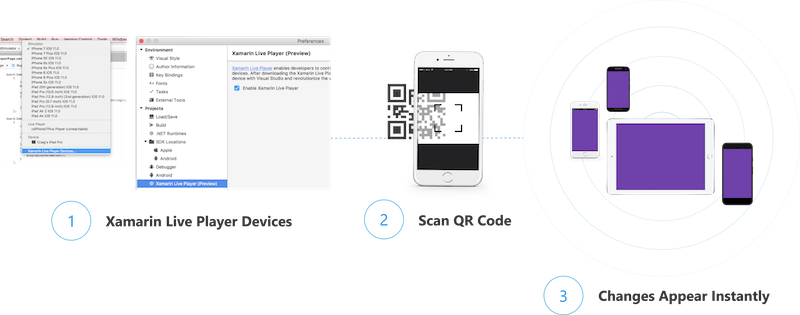 A fascinating new tool in preview is .NET Embedding, which promises the ability to create .NET Core libraries, that can be consumed by native code. If you want to build a .NET Core library and link it into a C++ project, call it from Objective-C or reference it from Java, you can do that. Xamarin Team built a sample solution called SmartHotel. This demonstrates many news and best practices in building modern Xamarin.Forms apps including cloud backend. Last year's BikeSharing360 sample is available on GitHub, so we can safely expect, that SmartHotel will soon follow suit.
A fascinating new tool in preview is .NET Embedding, which promises the ability to create .NET Core libraries, that can be consumed by native code. If you want to build a .NET Core library and link it into a C++ project, call it from Objective-C or reference it from Java, you can do that. Xamarin Team built a sample solution called SmartHotel. This demonstrates many news and best practices in building modern Xamarin.Forms apps including cloud backend. Last year's BikeSharing360 sample is available on GitHub, so we can safely expect, that SmartHotel will soon follow suit.
Visual Studio App Center
Building mobile apps requires constant feedback and quick iterations. With the goal of "Continous everything" comes the new Visual Studio App Center, formerly known as Mobile Center. App Center helps you and your team cover the complete life-cycle of mobile app development. It includes builds, tests including UI tests (standalone version known as Xamarin Test Cloud), distribution (HockeyApp), analytics and crash reporting and push notifications.
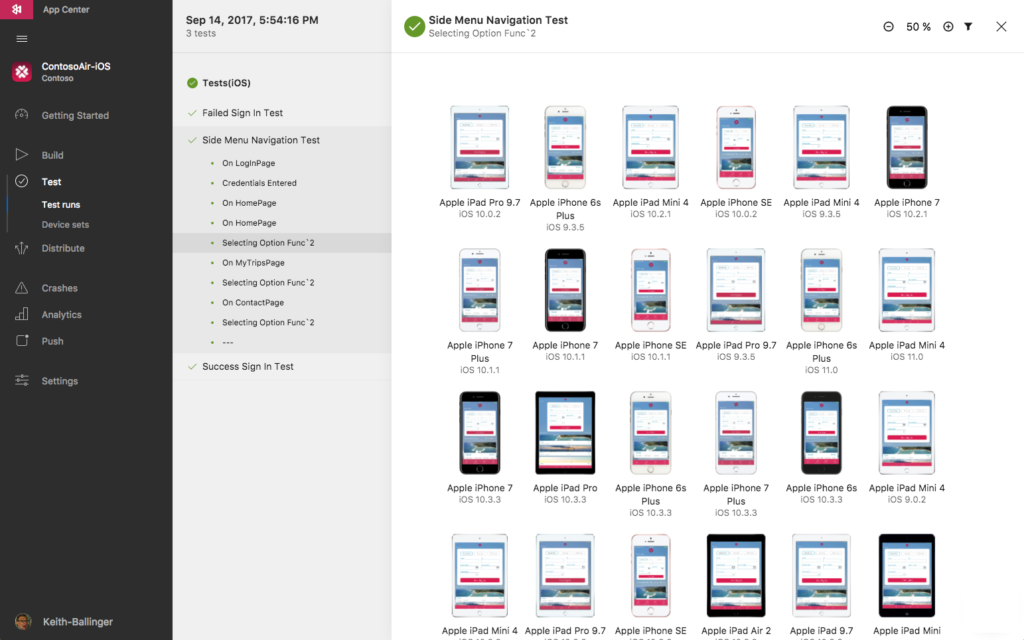
You can use App Center to manage iOS, Android (native, as well as Xamarin and React), UWP and in preview also macOS apps. The free tier of App Center is quite generous and additional features are paid Pay as You Go, similarly to most other cloud services.
Containers
Last year Microsoft integrated a full-fledged container deployment support into Azure with Docker. This year comes an update in form of Azure Container Service (AKS), which allows for easy orchestration of containers with Kubernetes. Announced hand in hand with AKS was the Visual Studio Connected Environment for AKS that helps you iteratively build and test within your team.
DevOps
Gone is the complicated and error prone configuration of DevOps solutions thanks to Visual Studio Team Services (VSTS) . VSTS offers a complete DevOps experience - Git repository hosting, build and deploy, test cloud, user beta testing, monitoring and analytics and full Microsoft Azure integration.
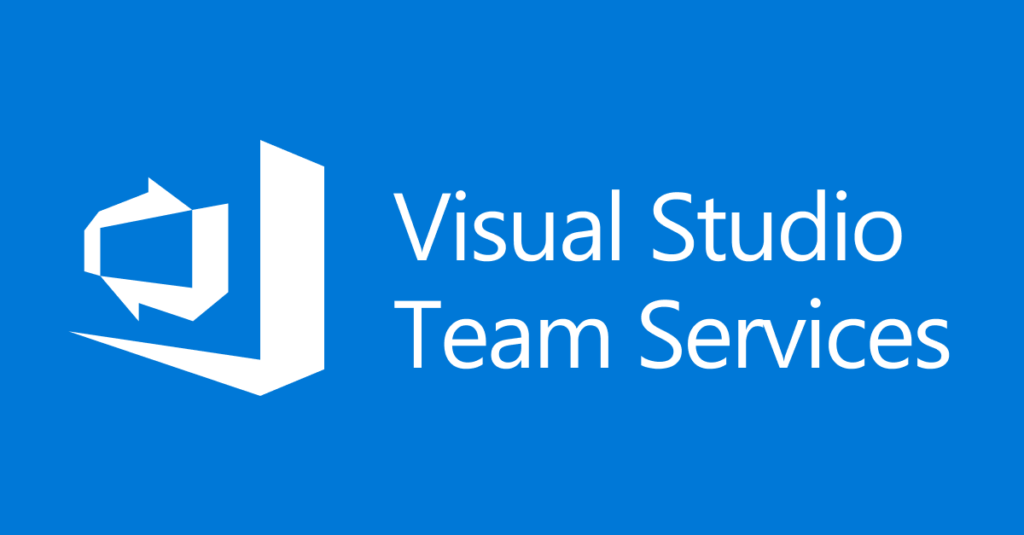
If you were ever worried if VSTS is scalable enought, rest assured, because VSTS is used not only by the VSTS team itself, but also by the whole Windows development team. Yes, you heard that right - Windows development is hosted on VSTS! Creating the complete DevOps pipeline can be sped up even more using Azure DevOps Projects, which sets up everything according to your requirements. Many developers will be happy to hear, that they are not limited to Microsoft technologies and can easily setup for example a DevOps solution for Java hosted on GitHub.
Databases
Microsoft SQL Server 2017 now runs on Windows, Linux and even in Docker containers. In addition to intelligent adaptive query processing offers a built-in machine learning support with R and Python and is the only data platform available on-premise as well as a fully managed service in the cloud. Creating a new SQL Server databse on Azure takes well less than a minute! To make management and development even easier, Microsoft announced the new SQL Operations Studio, available on Windows, Mac and Linux and simplifies manipulation with on-premise databases, Azure SQL and Data Warehouse. Azure Data Migration Service will give you a hand at moving your existing database to the cloud. Thanks to fully automated workflow it is now easy to move even a complex database to Azure in a matter of minutes. The tool supports third-party databases as well, e.g. Oracle. If PostgreSQL, MySQL or MariaDB sound more like your cup of tea, you will surely be pleased to hear that MIcrosoft adds first-class support for these databases to Azure - including high availability, security, scaling and full compatibility with existing libraries and tools. On top of it all, Microsoft became a platinum sponsor and member of the MariaDB Foundation.
Azure Cosmos DB
Azure Cosmos DB is a unique, globally distributed, multi-model NoSQL database, which can be horizontally scaled with guaranteed single digit millisecond latency. Petabytes of data and millions of transactions per second are no problem for this database.
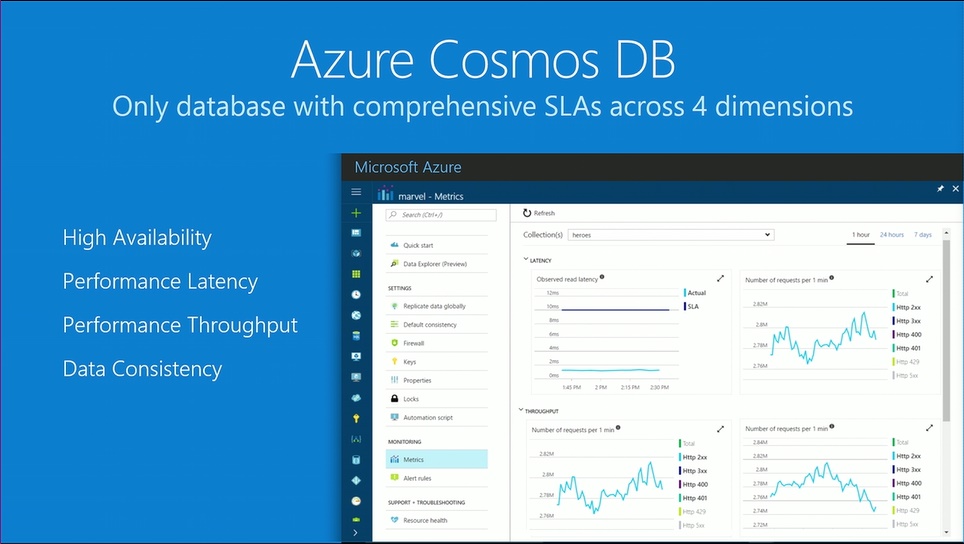
Cosmos DB is verz flexible even from developer's perspective and you can program against it using many APIs including MongoDB, DocumentDB, Table Storage, Gremlin Graph, Spark and newly also Cassandra.
Artificial intelligence and apps of the future
Apps of the future are AI-infuses, offer new user experiences and are data-driven.
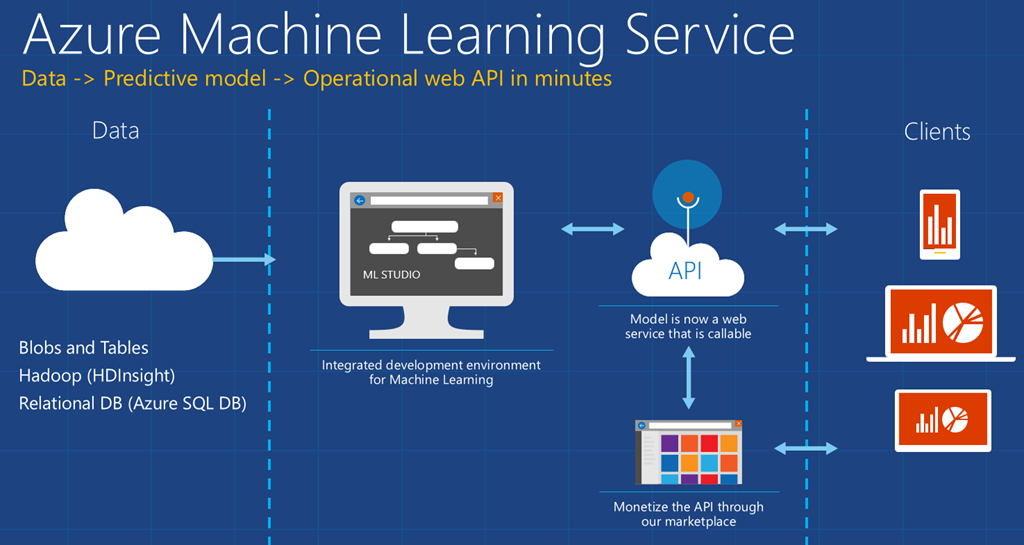
Developers can take advantage of Azure Machine Learning to train custom AI models or use one of the many pre-built HTTP REST enabled solutions from the Azure Cognitive Services offering. All of them are also extensible to suit just your needs (such as the Custom Vision Service).

Azure Databricks is a fast and easy collaborative platform for data analytics built on Apache Spark. It provides your team an interactive environment with support for AI integration and Power BI output. For new ways to interact with the user you should reach for the Azure Bot Service and build bots that understand natural language with Language Understanding Intelligent Service (LUIS). With Visual Studio Tools for AI you can quickly access all AI tool right from your favorite IDE. And if you haven't yet had a chance to get hands on with artificial intelligence, Microsoft prepared a new learning portal aischool.microsoft.com where you can learn everything with easy to follow tutorials.
Summary
We live in an interconnected world where intelligent cloud and intelligent edge are key components of success. Visual Studio and Azure give you as the developer the best tools with global reach. If you haven't yet, try out Azure for 30 days free with the possibility to use some of the services free-of-charge for a year after the trial ends. Happy coding!